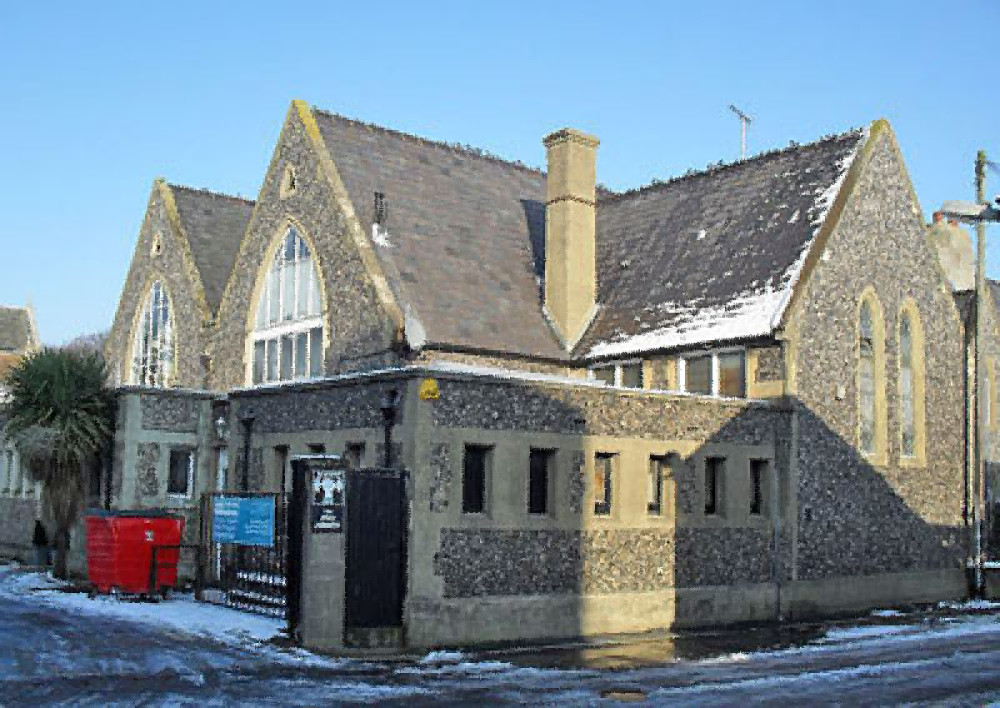Schools for all – eventually

JUST over a century ago Worthing had far more than the average number of private schools for a town of its size, catering – according to their own advertisements – `for the daughters and sons of gentlemen.’ With wealthy families and the expanding Victorian middle classes increasingly choosing to live by the seaside for their health, many of these schools were hoping to profit from catering for visitors’ children.
In 1900 and to administer `free’ education for those who could not afford these fees, a local school board was established in Worthing. Three years later the County Council became the public education authority though Worthing retained responsibility for `elementary’ schools until 1970.
Most schools in the town during the late 1800s were `private’ and offered widely ranging styles of education. Here – in many cases using their own words – is how the private schools of that time interpreted the `benefits’ they provided.
New College for Boys thought of itself as an academy. It was opened at 52 Shelley Road by a Mr Spurgeon in 1880 and he was convinced that one of their most important benefits was `having a highly certificated staff who taught musical drill.’
Girl pupils had to go across the road to Lyndale College for Girls, apparently under the same ownership.
Seabury School for the Daughters of Gentlemen, at 3 Heene Parade, was where the Misses Carr advertised: `Courses of instruction for English, French, German, Latin, mathematics, science, class-singing and harmony.’ Plus `special advantages for accomplishments’ – whatever that may have meant.
Miss Woods at her Elmcroft School in West Worthing, offered ` a thoroughly modern education for daughters of gentlemen’, while Frobel House School, where Miss Yerbury as principal was `assisted by experienced certificated governesses and visiting masters,’ offered to `take entire charge of pupils if desired.’
Southey Hall for the Sons of Gentlemen included a class for `little boys’ aged seven to nine.
Worthing Grammar School at 5 Liverpool Terrace specialised in `preparing pupils for the Civil Service,’ while Fleetwood School, run by a Miss Marshall (certificated) ran a separate class for `quite little boys’ (under seven-years-old).
Charlecote School, at 32 High Street (it later became Orchard House) prepared pupils for Woolwich and Sandhurst, teaching military subjects under Major Bevan RA. They advertised among their recent successes: `Sandhurst 1899, C G Blair, third place, infantry.’
Holmsdale House School endeavoured to increase their appeal to parents through the tummies of potential pupils. `High class prep school for sons of gentlemen,’ they advertised. `Most liberal table and special attention paid to delicate boys.’
An advertisment published in 1901 evidently hoped to score points with parents for Beachfield School in Brighton Road, Worthing. `The Rev.Cunningham (Corpus College, Oxford) receives pupils for Classics (highest) and offers special arrangements for pupils coming from the West end of the town.’
Holt Middle Class Girls School boasted a titled proprietor. Founded in Heene Road by Lady Henrietta Burrell in 1878, the building (where 136-138 Heene Road stands today) had originally been the Heene House Academy, run by artist, poet and schoolmaster John Tidey (1773-1849).
John Tidey had moved to Worthing from Dorking in 1805 and his school was probably the first in the Worthing area to receive recognition as a full-time educational establishment.
At that time, West Tarring was still a distinctly separate village and a West Tarring Academy existed at 27-29 High Street (now The Vine public house) from 1806 until 1826, run by a Naves Phillips.
Grafton House Boarding School, on the site of today’s Grafton multi-storey car park, was founded by an Eric Williams in 1878 but lasted only until 1900.
Worthing’s first co-educational school opened for pupils in 1888. Run by Miss Mary Louisa Bennett at No 13, The Steyne, it began as the Steyne School and was highly successful. But by 1925 girl pupils had been transferred to Homefield House, in Lyndhurst Road, and the boys to Broadwater Hall. Then in 1929 the Warren became the girls school and the boys moved to Homefield, which closed in 1939.
A prep school for boys (St Ronan’s) was founded at Mill Road, Worthing, in 1883 by the Rev Philip Crick. This Tudor-style school building was later occupied by Seaford College until their move to Petworth in 1963. The site is now College Gardens.
Despite a national industrial and business slump, new private schools were still opening up in Worthing during the 1930s.
Broadwater Manor (then just for boys) was founded in 1930. The Mount School for Girls opened in Westbrooke in 1931 (becoming the Sion Junior School in 1957); Langton House School at 11 Broadwater Road was founded in 1934, Sandhurst in 1937, Goring Hall (at first a girls school) in 1928, Charmandean Girls School in 1936.
Back in 1864 when opened it was an exclusively Catholic School called the Pension at Notre Dame de Sion and enjoyed the patronage of the Bishop of Southwark.
A `select school for young ladies’ it was coupled with the Convent Day School, which offered ` a solid English education with French and Needlework and German taught by a German lady.’
But survival depended on radical changes with the times. Boarding ceased in 1960 and a new, much broader-based, Sion Convent School was opened in Gratwicke Road in 1964. And since 1985 they have also taken boy pupils.